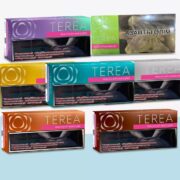
Parquet flooring has long been cherished for its timeless appeal and exceptional durability. Originating from France in the 17th century, parquet flooring has evolved into a versatile flooring option that combines classic elegance with modern functionality. In this comprehensive guide, we delve into the world of parquet flooring, exploring its various types, benefits, installation process, maintenance tips, and much more.
What is Parquet Flooring?
Parquet flooring is a type of wood flooring made from small wooden blocks or strips arranged in geometric patterns. These patterns create intricate designs that add character and charm to any space. The term “parquet” is derived from the French word “parqueterie,” which refers to a technique of arranging wooden pieces in decorative patterns.
Types of Parquet Flooring
Solid Wood Parquet
Solid wood parquet is made from solid pieces of hardwood, such as oak, maple, or walnut. These planks are typically thicker and more durable than other types of parquet flooring, making them ideal for high-traffic areas.
Engineered Parquet
Engineered parquet consists of a thin layer of hardwood veneer bonded to a plywood or composite base. This construction makes engineered parquet more stable and resistant to moisture compared to solid wood parquet, making it suitable for installation in areas with fluctuating humidity levels.
Laminate Parquet
Laminate parquet is composed of multiple layers of synthetic materials fused together to mimic the look of real wood. While laminate parquet may not offer the same authenticity as solid wood or engineered parquet, it is more affordable and easy to maintain.
Benefits of Parquet Flooring
Parquet flooring offers several advantages that make it a popular choice for homeowners and designers alike:
Durability
Parquet flooring is known for its exceptional durability and longevity. With proper maintenance, parquet floors can last for decades, retaining their beauty and elegance year after year.
Versatility
Parquet flooring comes in a variety of wood species, finishes, and patterns, allowing for endless design possibilities. Whether you prefer a classic herringbone pattern or a contemporary chevron design, there is a parquet flooring option to suit every style and taste.
Aesthetic Appeal
One of the most appealing features of parquet flooring is its timeless beauty. The intricate patterns and natural variations in wood grain create a visually stunning backdrop for any interior décor scheme.
Factors to Consider Before Installing Parquet Flooring
Before installing parquet flooring in your home, there are several factors to consider:
Room Size and Layout
Consider the size and layout of the room where you plan to install parquet flooring. Larger rooms may benefit from wider planks or more intricate patterns, while smaller spaces may require narrower strips to avoid overwhelming the area.
Maintenance Requirements
Parquet flooring requires regular maintenance to preserve its beauty and integrity. Be prepared to sweep or vacuum regularly to remove dirt and debris, and avoid using harsh cleaning products that can damage the wood.
Budget Considerations
Parquet flooring can vary significantly in price depending on the type of wood, pattern, and installation method. Consider your budget carefully and explore different options to find the best fit for your needs.
How to Install Parquet Flooring
Preparation of Subfloor
Before installing parquet flooring, ensure that the subfloor is clean, level, and free of any debris or moisture. If necessary, apply a moisture barrier to prevent warping or buckling of the wood.
Installation Process
The installation process for parquet flooring will vary depending on the type of flooring chosen. Solid wood parquet may require nailing or gluing the planks to the subfloor, while engineered or laminate parquet may use a click-lock or adhesive method.
Finishing Touches
Once the parquet flooring is installed, apply a protective finish to seal and protect the wood. This will help enhance the natural beauty of the wood and prolong its lifespan.
Maintenance Tips for Parquet Flooring
To keep your parquet flooring looking its best, follow these maintenance tips:
Regular Cleaning
Sweep or vacuum the floor regularly to remove dirt and debris, and mop occasionally with a damp mop and mild detergent to remove stains and spills.
Avoiding Moisture Damage
Avoid exposing parquet flooring to excessive moisture, as this can cause warping, buckling, and other damage. Place rugs or mats in high-traffic areas to protect the wood from water damage.
Refinishing Options
If your parquet flooring starts to show signs of wear and tear, consider refinishing it to restore its original beauty. This process involves sanding down the surface of the wood and applying a fresh coat of finish to protect and rejuvenate the floor.
Comparison Between Parquet and Other Flooring Options
When choosing flooring for your home, it’s essential to consider the pros and cons of each option. Here’s how parquet flooring compares to other popular choices:
Hardwood Flooring
While both parquet and hardwood flooring are made from real wood, they differ in installation method and design. Hardwood flooring typically consists of wide planks installed in a linear pattern, whereas parquet flooring features smaller blocks or strips arranged in intricate designs.
Laminate Flooring
Laminate flooring is a cost-effective alternative to hardwood and parquet flooring. While laminate flooring may not offer the same authenticity as real wood, it is more durable and resistant to scratches and moisture.
Vinyl Flooring
Vinyl flooring is another affordable option that mimics the look of real wood. However, vinyl flooring is typically less durable than hardwood or laminate and may need to be replaced more frequently.
Popular Parquet Flooring Patterns
Parquet flooring is available in a variety of patterns, each with its unique charm and character. Some of the most popular patterns include:
Herringbone
Herringbone is a classic parquet pattern characterized by diagonal rows of wooden blocks arranged in a V-shaped pattern. This timeless design adds sophistication and elegance to any space.
Chevron
Chevron is similar to herringbone but features blocks cut at an angle to create a zigzag pattern. This bold and modern design is perfect for adding a touch of drama to contemporary interiors.
Basket Weave
Basket weave is a traditional parquet pattern that resembles the weaving pattern of a basket. This intricate design adds texture and visual interest to floors, making it a popular choice for formal living areas and entryways.
Environmental Impact of Parquet Flooring
As awareness of environmental issues grows, many homeowners are seeking eco-friendly flooring options. Fortunately, parquet flooring can be a sustainable choice when sourced and installed responsibly.
Sustainable Sourcing
Choose parquet flooring made from sustainably harvested wood to minimize environmental impact and support responsible forestry practices. Look for certifications such as FSC (Forest Stewardship Council) to ensure that the wood is sourced from responsibly managed forests.
Eco-Friendly Finishes
Opt for water-based finishes and adhesives that emit fewer volatile organic compounds (VOCs) and reduce indoor air pollution. These eco-friendly options are safer for your family and the environment while still providing excellent protection for your floors.
Cost Considerations for Parquet Flooring
The cost of parquet flooring can vary depending on several factors, including the type of wood, pattern, and installation method. Here are some cost considerations to keep in mind:
Installation Costs
Installation costs for parquet flooring can range from moderate to high, depending on the complexity of the design and the skill level required. DIY installation may be possible for simple patterns, but more intricate designs may require professional installation to ensure optimal results.
Maintenance Expenses
While parquet flooring requires regular maintenance to keep it looking its best, the long-term maintenance costs are relatively low compared to other flooring options. With proper care and maintenance, parquet flooring can retain its beauty and durability for decades.
Parquet Flooring Trends
Parquet flooring continues to evolve with changing design trends and preferences. Here are some of the latest trends in parquet flooring:
Contemporary Designs
Contemporary parquet designs feature bold geometric patterns, unconventional layouts, and unexpected color combinations. These modern interpretations of traditional parquet patterns add a fresh and stylish touch to any space.
Customization Options
With advances in technology, homeowners can now customize their parquet flooring to suit their unique style and preferences. From custom patterns and finishes to personalized inlays and borders, the possibilities are endless when it comes to creating a one-of-a-kind flooring masterpiece.
Common Myths About Parquet Flooring
Despite its many benefits, parquet flooring is often subject to misconceptions and myths. Here are some common myths debunked:
Maintenance Challenges
While parquet flooring does require regular maintenance to preserve its beauty and integrity, it is no more difficult to maintain than other types of wood flooring. With proper care and maintenance, parquet flooring can withstand daily wear and tear for years to come.
Limited Design Choices
Contrary to popular belief, parquet flooring offers a wide range of design choices, from classic patterns like herringbone and chevron to custom designs tailored to your specific taste and style. With endless options for wood species, finishes, and patterns, you can create a truly unique flooring masterpiece that reflects your personality and lifestyle.
Conclusion
Parquet flooring is a timeless flooring option that adds warmth, elegance, and character to any home. With its durable construction, versatile design options, and eco-friendly properties, parquet flooring is an excellent choice for homeowners seeking a combination of style and functionality. Whether you prefer classic herringbone or contemporary chevron, there is a parquet flooring option to suit every taste and budget.
FAQs About Parquet Flooring
1. Is parquet flooring suitable for kitchens and bathrooms?
- While parquet flooring can be installed in kitchens and bathrooms, it is essential to take precautions to protect the wood from moisture damage. Consider using engineered or laminate parquet in these areas for added durability.
2. Can parquet flooring be refinished?
- Yes, parquet flooring can be refinished to restore its original beauty and luster. Depending on the extent of wear and damage, the floor may need to be sanded down and refinished with a fresh coat of sealant.
3. How long does parquet flooring last?
- With proper care and maintenance, parquet flooring can last for several decades. Regular cleaning, routine maintenance, and occasional refinishing can help prolong the lifespan of your parquet floors.
4. Is parquet flooring environmentally friendly?
- Parquet flooring can be an environmentally friendly choice when sourced from sustainably managed forests and finished with eco-friendly materials. Look for certifications such as FSC (Forest Stewardship Council) to ensure that your parquet flooring is responsibly sourced.
5. Can I install parquet flooring myself, or do I need professional installation?
- The complexity of the installation process will depend on the type of parquet flooring chosen and the desired pattern. While DIY installation may be possible for simple patterns, more intricate designs may require professional installation to ensure optimal results.










